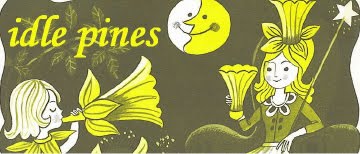Ennis Josephine Honey was born on 23 April 1919, in Victoria, the eldest of 12 children of Joseph O’Callaghan and Ennis (Irene), née Angus. Ennis had an impoverished childhood as her father struggled with alcoholism, unemployment and supporting a large family (Honey, Nymphs and Goddesses 14) Ennis attended Elwood Central School before going to Melbourne Girls’ High School in 1932 (now MacRobertson Girls’ High School). After finishing school she became a student teacher and then taught drama and speech part-time in two private schools. Winning a Melbourne radio station acting contest, she moved to Sydney in 1942 and had several small radio parts. During the war she worked as a governess in northern New South Wales (Honey, Nymphs and Goddesses 236). She returned to Sydney, working in a private library where she met publisher Bill Honey, a widower. She taught at Cranbrook before the pair were married in 1944 (Honey, Nymphs and Goddesses 237). Returning to radio she was involved in the Argonauts in 1964 and school broadcasts from 1964 to 1966. In 1965 she was appointed sub-editor of the Australian Women’s Weekly, a position she held for ten years. During her writing career she wrote articles for publications including the Daily Mirror, New Idea, Sydney Morning Herald, Home and Family and 24 Hours (Whos’ Who 324). Honey wrote four children’s picture books and a book of poetry in addition to her school story, Janey of Beechlands. In 1985 she wrote a biography of Violet Somerset, an Australian singer and artist teacher, and in 1994, a memoir, Nymphs and Goddesses, describing her schooling at Melbourne Girls’ High School. In the 1990s she was living at Balgowlah in New South Wales.
Further Reading
Honey, Ennis. Nymphs and Goddesses: The Story of a Girlhood. Balgowlah Heights: Beaufort Books, 1994.
Janey of Beechlands. Edgecliff: Bilson-Honey Pty. Ltd., [1947]. 287 pages. Not illus.
Janey of Beechlands is an example of the trend of 1940s Australian girls’ school stories to delve into mystery and adventure plots. It features an impoverished heroine who recovers her family fortune. Thirteen-year-old Janey is a new girl at St Clares, having won a scholarship. She lives with her parents on their struggling station property, Beechlands. Janey’s Grandfather died penniless two years earlier despite rumours that he was very wealthy, and Janey’s parents are trying to keep Beechlands from being sold. Janey discovers an old diary of her grandfather’s, which mentions hidden diamonds. Janey’s efforts to locate the diamonds are thwarted by a fellow school mate, Christine, whose father is trying to buy Beechlands and find the diamonds himself, which is the key action plot of the story. Janey and her friend Wendy try to find the diamonds but Christine and an accomplice plot to search a secret passage on the property. They tie Janey up but she is rescued by Wendy and the police arrest Christine. Janey and Wendy find the diamonds in an old perfume bottle, meaning Beechlands will not have to be sold. Honey’s romantic storyline is continued with Janey’s parents adopting orphaned Wendy. The adventure storyline is interspersed with more traditional school details. Janey faces both trials and triumphs at St Clares: she wins a place in the First Eleven, but is later accused of theft and threatened with expulsion (a popular theme in school stories), until the real culprit is revealed. Janey’s resourcefulness and popularity are shown when she helps her form win the Boat Race against the Sixth Form, and is awarded the Raymond Prize, voted for by her peers, for the girl who has done most for the school.



No comments:
Post a Comment